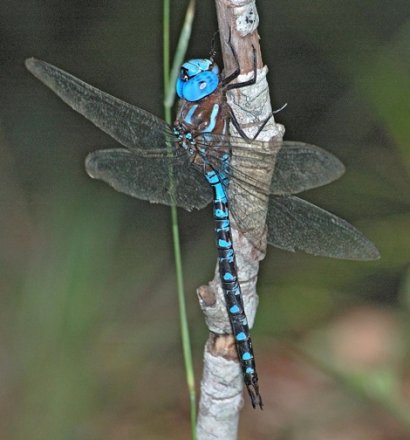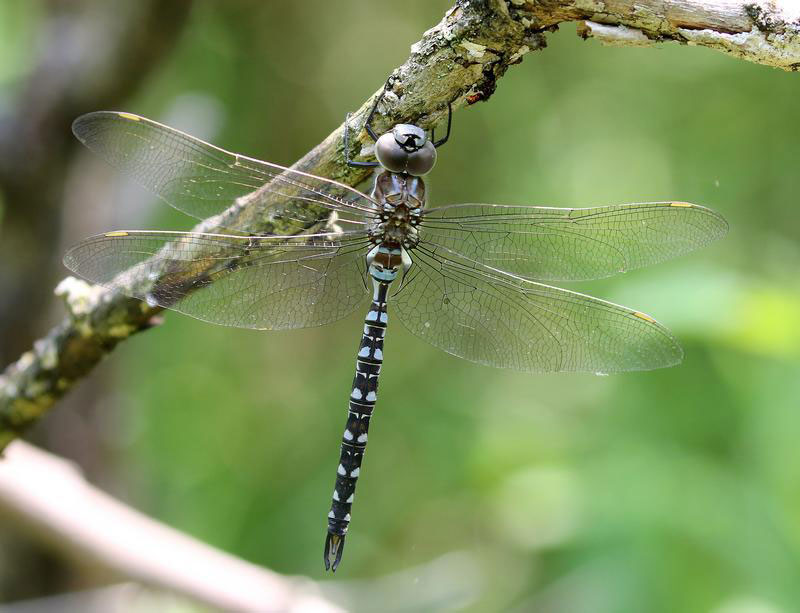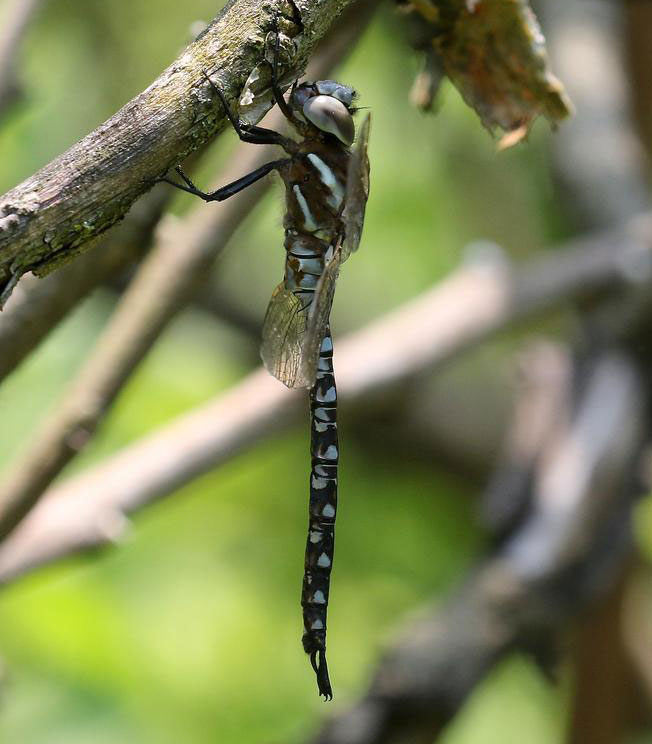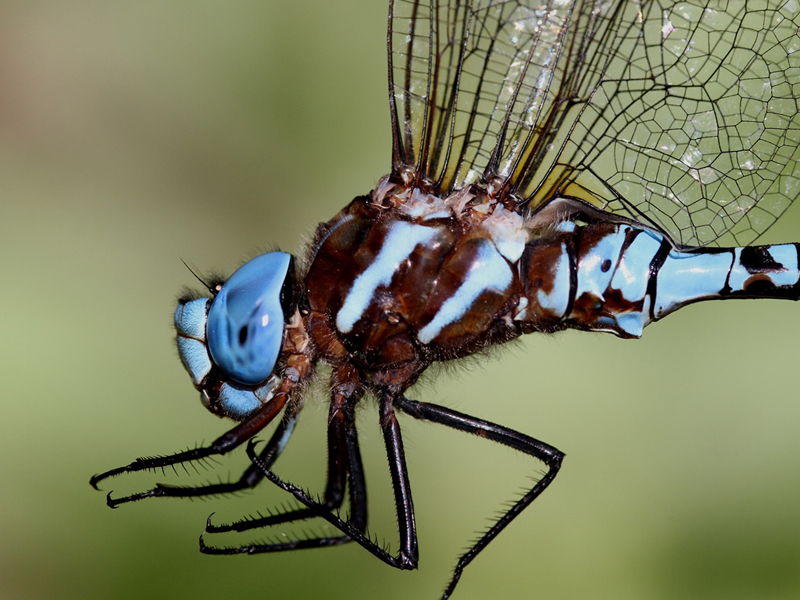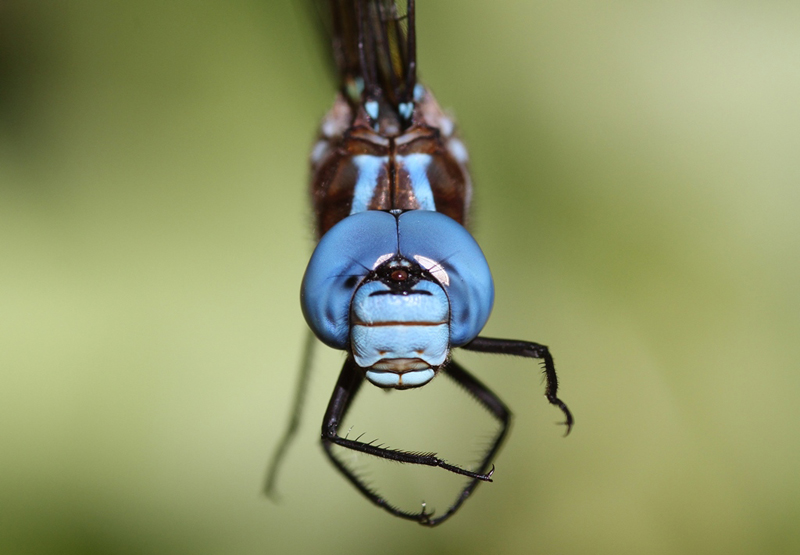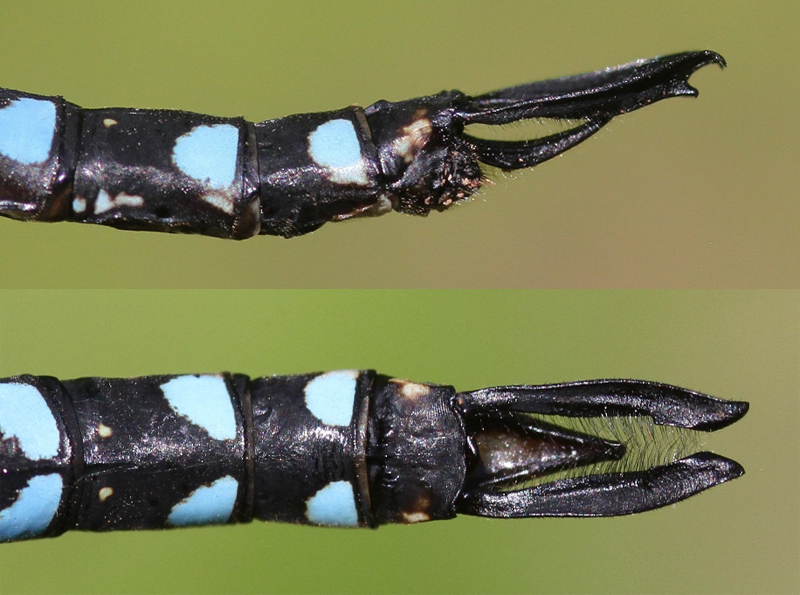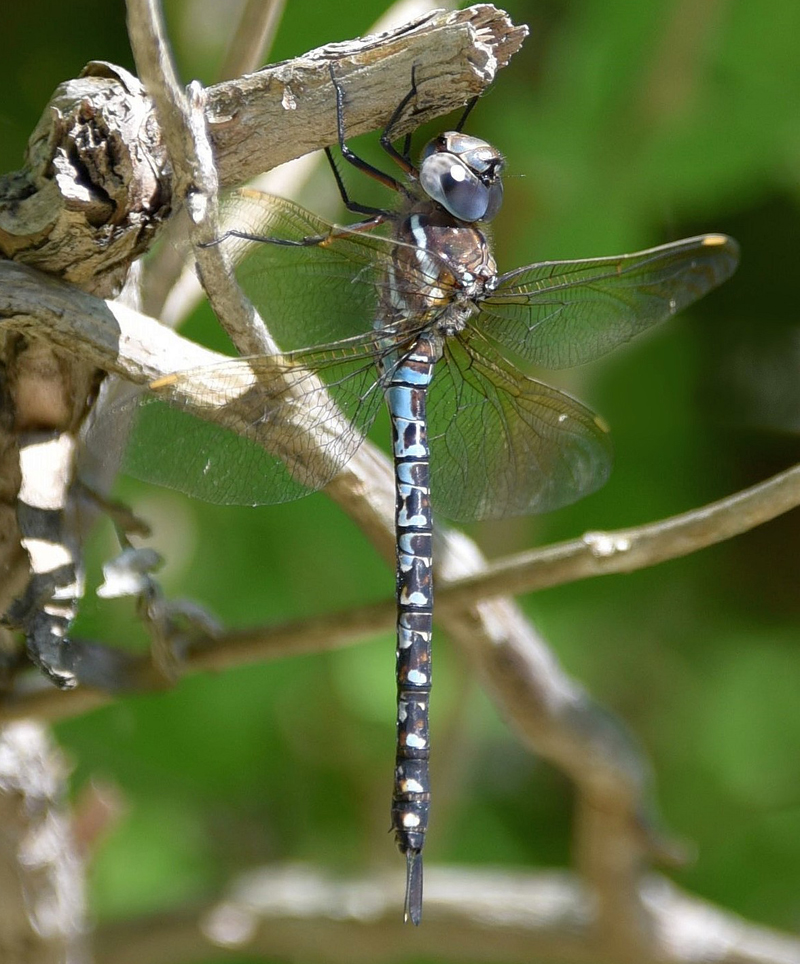




Aeshnidae, Darner Family
"Most Wanted" Species
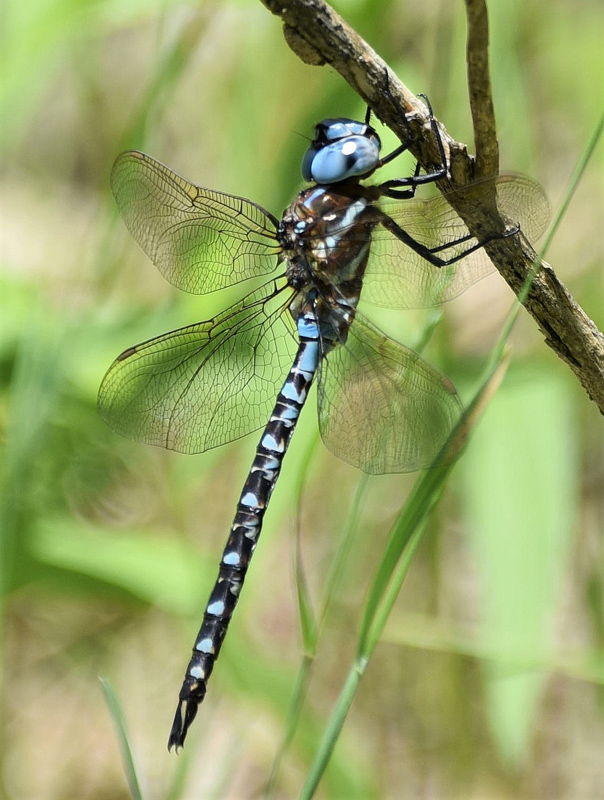
The neotropical darners of the genus Rhionaeschna are very similar to and were formerly classified with the mosaic darners (genus Aeshna). Spatterdock darner is very similar to the blue-eyed darner, a western species that was recently discovered in Wisconsin in 2007. These two species are the only members of the genus Rhionaeschna that are found here (ranges of the two species overlap in Wisconsin). Males of these two species are easy to separate from other darners by their striking blue eyes and by the forked, beak-shaped projections on their upper claspers (cerci). However, males of the two species can be separated from each other only by careful, in-hand examination of the shape of the claspers and the length of the abdomen. Also, the spatterdock darner flies a bit earlier in the season than the blue-eyed darner. Both species are uncommon in Wisconsin and their ranges and habitats need to be better documented. Please report any sightings of darners with blue eyes to this website. Females are difficult to separate from each other and from a number of other darner species. However, genders of both species have a noticeable "bump" (tubercle) in the underside of abdominal segment 1 (S1) that is unique to this genus. Adults fly in an irregular pattern over open fields or large areas of open water.
Status-Global/State:
Distinguishing Characteristics:
Like most darners, spatterdock darners are relatively large dragonflies. Males have intense blue coloration on the face, eyes, and abdominal spots. The thoracic side stripes of males are relatively straight (slightly indented), slightly widened at the upper ends, and whitish blue. The distinctively forked male cerci (upper claspers) separate the two Wisconsin species of Rhionaeschna from all other darners (see illustrations in Paulson 2011, p. 200, and DuBois 2010, p. 147). Differences between spatterdock and blue-eyed males are slight, consisting primarily of spatterdock having a relatively longer abdomen, very slightly wider and more irregular thoracic side stripes, and shallower forks in the cerci (see also Paulson 2011). Females of the two species are very similar: female spatterdock has a slightly smaller tubercle on the underside of S1 and slightly longer cerci, but examine males with which they are associated to confirm determinations. Females of both species occur in blue (andromorph) and green (heteromorph) forms.
Description of Habitat/Range:
Spatterdock darner, an eastern species, is usually found at shallow, fishless ponds, typically with abundant water lilies (including spatterdock). In Wisconsin this species is known from only a handful of sites in a few central and southeastern counties.
Flight Season:
One of earliest mosaic darners, the flight season runs from early June to early July in Wisconsin.
(Click on photos to enlarge)
